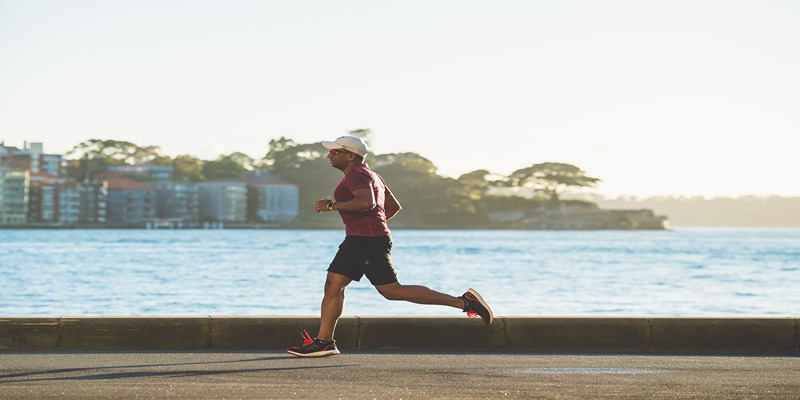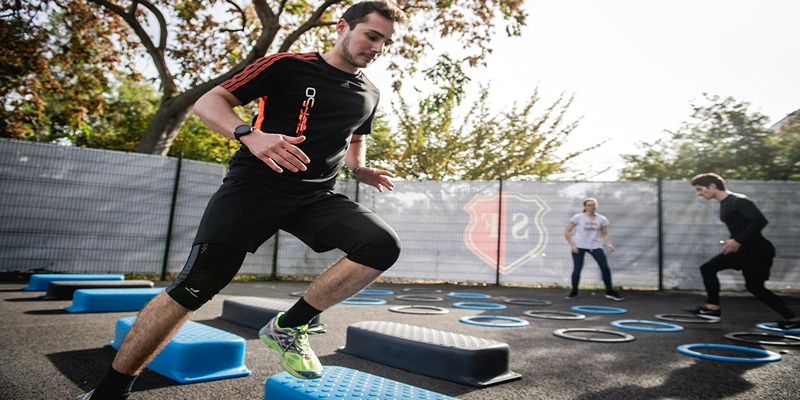Cardio, or cardiovascular exercise, is an essential part of any workout programme, but notably one for newcomers. Basically, it's anything that gets your heart rate up and your cardiovascular system working better. Walking, jogging, riding, and swimming are all part of this category. As it paves the way for better health and endurance in the long run, cardiovascular exercise is essential for beginners. Cardiovascular exercise, when done regularly, improves blood circulation, strengthens the heart and lungs, and lowers the risk of cardiovascular illnesses. It provides newcomers with a holistic approach to health and is also useful for managing weight and improving mental health. An important first step for those who have never exercised regularly is to start with easy, low-impact cardio activities. This will help ease them into a more active lifestyle.

Understanding the Basics of Cardio Workouts
What Constitutes Cardio Exercise
Cardio, short for cardiovascular exercise, is any kind of exercise that works more than one muscle group at a time to raise the heart rate and respiration rate. Active recreation may take many forms, but some common ones include jogging, swimming, cycling, and aerobics. As a result of the increased oxygen demand by the muscles, the heart has to work harder during these activities, which raises the heart rate. Cardio exercises are great for people of all fitness levels since you can adjust the intensity to your liking. Walking and light cycling are examples of low-intensity cardio, while jogging, swimming laps, and high-energy aerobics are examples of high-intensity cardio.
Benefits for Overall Health
A well-rounded fitness regimen must include cardiovascular activity due to its many health advantages. The cardiovascular system and lung capacity are both improved by its first-rate effects on cardiovascular health and endurance. Cardio exercise has numerous health benefits. These include lower blood pressure, decreasing the chance of developing cardiovascular diseases and enhancing cholesterol levels. Cardiovascular exercise is also important for controlling one's weight. It aids in weight maintenance or loss by burning fat and calories. As a result, diseases and malignancies linked to fat, such as type 2 diabetes, are less likely to occur. Moreover, strength training and muscular tone are two additional benefits of cardiovascular exercise, especially for the legs. Cardio is a great approach to start getting in shape and improving your mental and physical health for beginners since it's so versatile.
Starting Cardio Workouts: First Steps for Beginners
Selecting the Right Type of Cardio
If you're just starting out with cardio, it's important to choose the correct kind for you. It's crucial to choose exercises that work with one's unique tastes, level of physical condition, and desired outcomes. For those who are just starting out with exercise or who are experiencing joint pain, low-impact activities such as swimming, cycling, or walking are great options. While getting your heart rate up, these exercises put little strain on your body. Those looking for a more strenuous exercise may choose more energetic alternatives, such as jogging, dancing, or group fitness courses. To stay with the habit, it's important to discover something you like doing.
Tips for Getting Started Safely
It is critical to start a cardiac programme cautiously to avoid injuries and achieve long-term success. If you're not used to exercising regularly or have been away for a while, it's best to ease into it with moderate intensity. Workout time and intensity should be increased gradually as fitness levels rise. As a general guideline, it's recommended to begin with 20-30 minute sessions, three to five times weekly.
When exercising, it is important to wear the right gear, particularly shoes, to provide support and protection. Shoe pain and injury may be avoided with an investment in high-quality, properly-fitting footwear.
A safe exercise routine must include warm-ups and cool-downs. Before each workout, warm up your muscles for 5 to 10 minutes. After that, cool down to gradually return your heart rate to normal.

Beginner's Cardio Guide: Developing Your Routine
Structuring Your Cardio Sessions
For novices, the key to productive and pleasurable exercises is adopting a well-structured aerobic regimen. At the outset, try to get in three to five 20- to 30-minute aerobic workouts weekly. The body can adjust to new physical demands and yet get enough rest at this frequency. To keep things interesting and target various muscle areas, use workouts that are distinct from one another. For instance, do different forms of exercise like walking, swimming, and cycling at different times each week.
A low-intensity warm-up lasting 5–10 minutes should precede each workout. This could include gentle running or brisk walking to get the heart and muscles ready for harder exercise. Gradually up the intensity after warming up. A moderate level of intensity is ideal for the most of the session; at this level, speaking is feasible but sustained discussion is challenging. Fat loss and cardiovascular health are both enhanced at this level. Finally, to start the recovery process, do a 5- to 10-minute cool-down during which you progressively reduce the intensity to bring your heart rate down.
Progressing Gradually to Avoid Injury
For those just starting out with cardiovascular exercise, it is essential to develop at a slow but steady pace. Rake up the intensity or length of your exercises by a little amount every week. This might include extending the duration of each exercise, stepping up the intensity, or including modest hills into a cycling or walking route.
By building muscle and joint strength, strength training activities, when done twice weekly, may also help reduce the likelihood of accidents. By fostering both strength and endurance, this well-rounded fitness programme helps the body adjust to higher levels of cardiovascular exercise.
Pay attention to the cues your body is asking you for. It is critical to relax and recuperate if you are in pain or really exhausted. Burnout and injury are possible outcomes of overtraining. In order to repair muscles and make general improvement, rest days are essential.
Conclusion
When starting a cardiac fitness programme from scratch, it's important to grasp the fundamentals, choose appropriate exercises, and design routines to allow for slow but steady improvement. Beginners may successfully monitor changes and remain motivated by establishing reasonable objectives and utilising the right tools to measure progress. To have long-term success, it is crucial to include a variety of cardio workouts, be consistent, and listen to your body. Incorporating cardiovascular activity into your fitness routine has several benefits, including improving your physical and emotional health. Anyone may turn cardiovascular exercise into a satisfying and essential component of their lives with commitment and persistence.

Attain Your Skincare and Haircare Goals with Cold-Pressed Coconut Oil
Jan 03, 2024

Best Prebiotic Foods
Dec 22, 2023

Yoga – An Activity for All Ages With Plenty of Benefits
Dec 17, 2023

Beginner's Roadmap to Starting Cardio Workouts
Dec 18, 2023

7 Items You Should Add To Your Shampoo For Fast Hair Growth
Jan 03, 2024

Understanding Scalp Sensitivity
Dec 31, 2023

How Much Caffeine in Coffee
Dec 20, 2023

The Power of the Lunch Break: Why Skipping it is a Mistake
Jan 10, 2024



